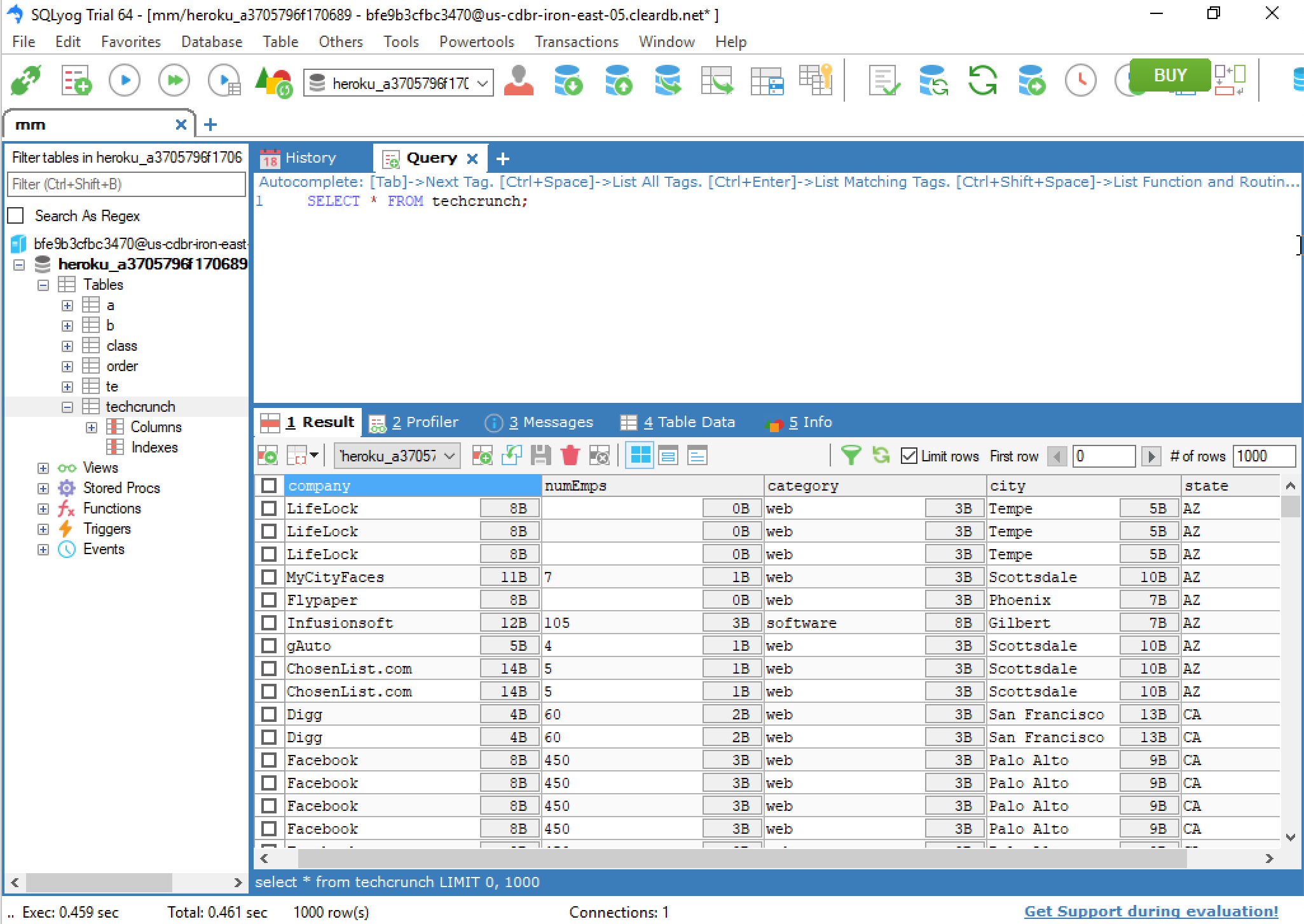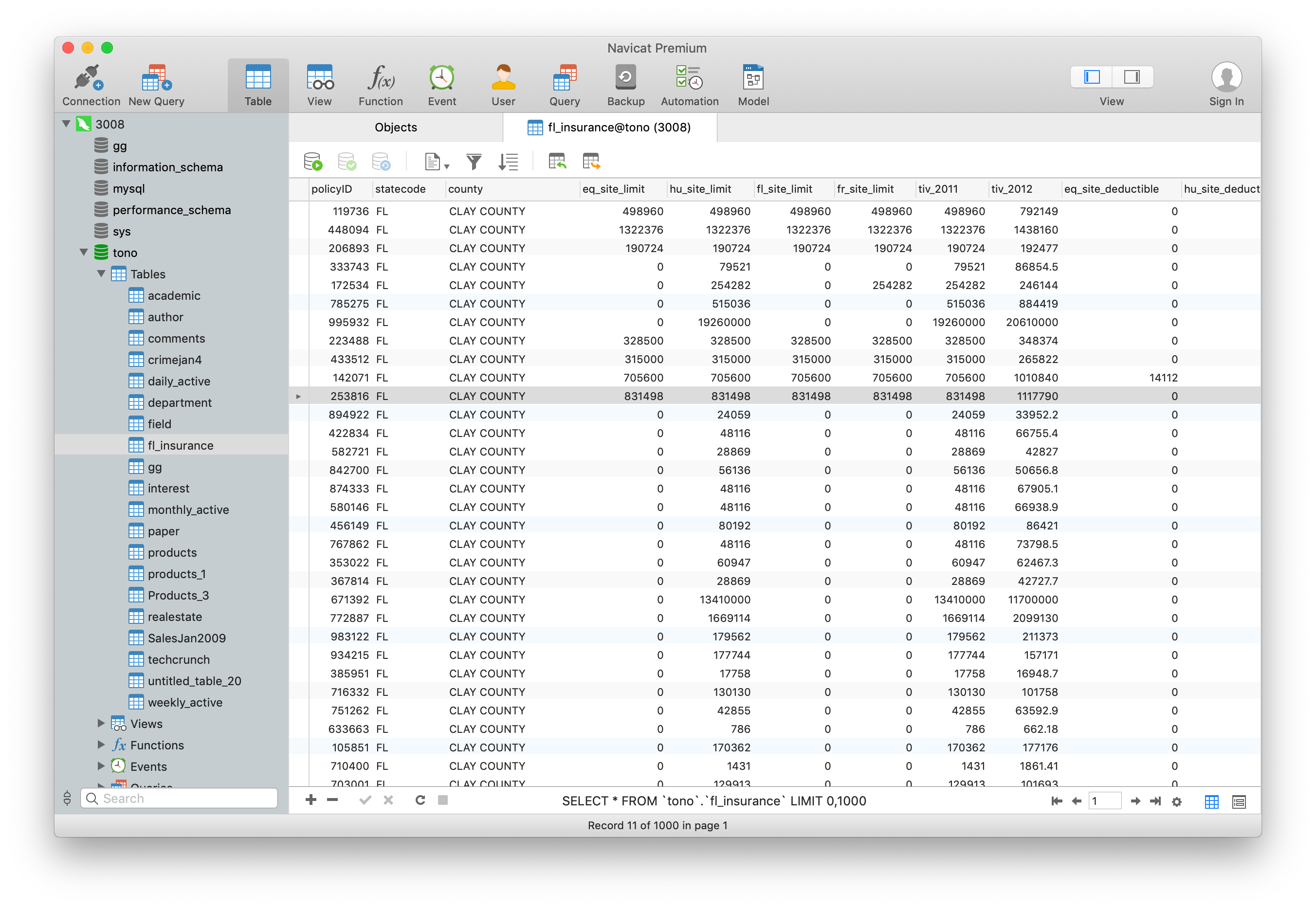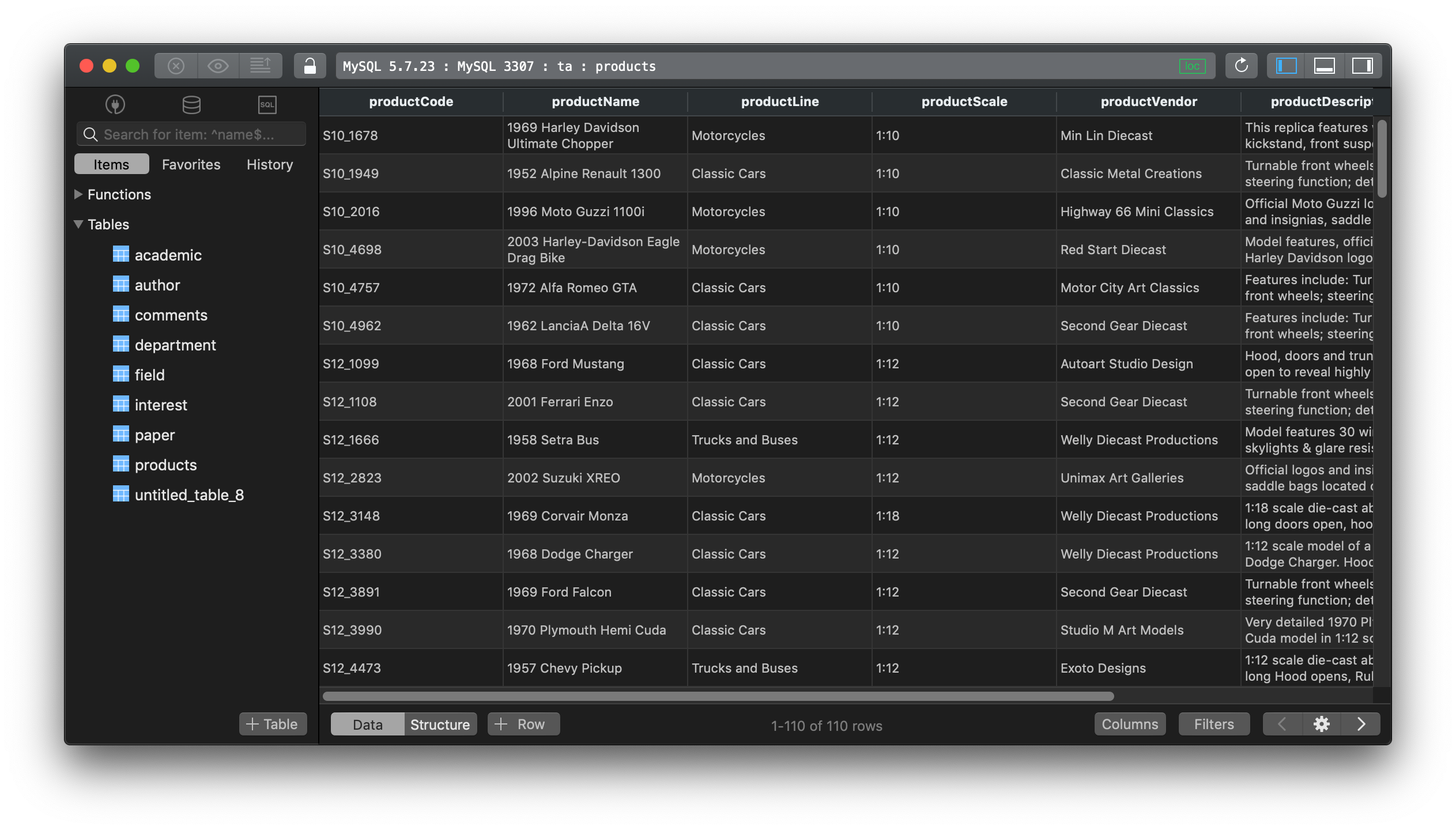SQLyog vs Navicat vs TablePlus - A quick review
In this post, we are going to have a quick review of SQLyog, Navicat, TablePlus; and compare the pros and cons to see which is the best GUI client to manage your databases.
1. SQLyog
For those Windows users, SQLyog is among the most popular solutions for MySQL database management.
-
Supported platforms: SQLyog works on Windows only.
-
Supported Drivers: SQLyog was built specifically for MySQL and currently, it only supports MySQL and the drop-placement MariaDB.
-
Pricing: SQLyog has a community version, mostly aimed at software developers and free for personal use but it has a limited set of feature. The commercial version has a 14-day trial period. After that, you will need to purchase for $299/user.

Pros:
- It’s feature rich
- Visual Query Builder and Schema Designer
- Migration Tools to Copy Database to different Host/Database.
- SSH Tunneling and SSL Connections
- Smart Autocomplete
- User management
- Database diagnostics to quickly check, repair, analyze and optimize your databases.
- The commercial version includes some advanced features such as Database Synchronization Wizard, Visual Data Comparison Wizard, Scheduled Backups/Scheduled Jobs and Query Profiler
Cons:
- The UI is a little clumsy, the icon design doesn’t always communicate the purpose of the feature.
- Only supports MySQL. If you work with more database other than MySQL and MariaDB, it’s a huge drawback.
- Only works on Windows
- It’s pricey.
2. Navicat
Navicat offers a powerful tool for both database development and administration.
-
Supported platforms: Navicat is cross-platform. It’s available on Mac, Windows, Linux. Navicat also has its iOS versions.
-
Supported Drivers: Navicat supports several popular databases: MySQL, MariaDB, MongoDB, Oracle, SQLite, PostgreSQL, and Microsoft SQL Server.
-
Pricing: Navicat is a commercial application with 14 days trial and it has many pricing schemes. You can either buy a special edition for MySQL with $119 for Non-Commercial Edition, $199 for Standard Edition, and $299 for Enterprise Edition; or you can buy Navicat Premium to work with all supported drivers at the price of $1299 for Enterprise Edition and $599 for Non-Commercial Edition.

Pros:
- It’s cross-platform and supports multiple drivers.
- Data and structure synchronization
- Visual query builder and report builder
- Excellent import/export options
- Supports many languages, including Polish, Russian, Japanese, Portuguese, Korean, Simplified Chinese, Traditional Chinese, Spanish, French, and English
- Compatible with other Navicat products: Navicat Monitor, Navicat Data Modeler, Navicat Report Viewer, and Navicat Data Model Essentials.
Cons:
- It’s expensive. A single machine license for the most standard version (MySQL) is already $299. If you work with more than one drivers, such as PostgreSQL, SQL Server, or SQLite, you will end up purchase the Navicat premium package at $1,299.
- It’s one of the most resource-intensive tools. It’s heavy and will consume a large portion of memory to run.
- Very few shortcut keys.
- The development cycle is very long, a new version is released every one or two year.
3. TablePlus
With a native build and a lightweight size, TablePlus is a very handy tool for managing multiple databases.
-
Supported platforms: TablePlus is built native for each platform. It started out with a native version for Mac, then another version for Windows, and a version for Linux was introduced recently as an alpha release. It also has an iOS version.
-
Supported Drivers: TablePlus supports a handful of relational databases: MySQL, PostgreSQL, SQLite, Microsoft SQL Server, Amazon Redshift, MariaDB, CockroachDB, Vertica, Oracle; and two popular NoSQL databases: Cassandra and Redis.
-
Pricing: TablePlus has a free version with full set of features which you can download and use forever, but there are some usage limitations. If you use it heavily, the license costs $59 to remove all those limitations.

Pros:
- Native build for each platform so it’s fast, lightweight, and stable.
- Clean and simple interface.
- Multiple drivers support
- Multiple conditions data filter
- Queries history and keyword binding favorite.
- Streaming results and async loading to show queries results faster and doesn’t block the UI.
- Very quick inline editing for table data and structure, you also can edit query results directly.
- Smart query editor with highlight syntax, instant autocomplete, SQL reformat.
- Multiple carets
- A plugin system to extend the app.
- Quick support. TablePlus releases new updates regularly and responds to users’ requests almost immediately.
Cons:
It currently lacks of some advanced features such as ER Diagram, database compare tool to Diff and Sync, etc.
4. Conclusion
Go with Navicat if you:
- Are comfotable with the cost
- Need a full-featured tool
- Don’t mind the slugginess
Go with SQLyog if you:
- Work with MySQL only
- Work on Windows only
- Are comfortable with the cost
Go with TablePlus if you:
- Are a fan of native experience
- Work with multiple databases
- Want a modern design with better usability
- Want quick support & development cycle.